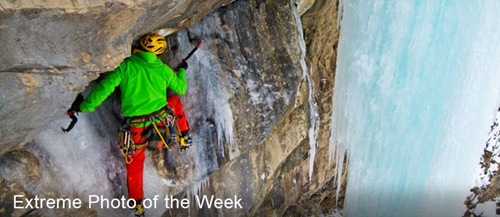
1. Rock and Ice Climbing in Santaquin Canyon, Utah, USA
“At this moment I was thinking how radical it was going to be to swing out onto that dagger of ice,” recalls climber Scott Adamson, seen here on a new route called the Angel of Fear in Utah’s Santaquin Canyon. “The moves going out to the dagger are not all that difficult physically, but you should still be heads up so you don’t skate off,” notes Adamson, a 15-year ice-climbing veteran. “After I weaselled in some good rock protection the climbing seemed mellow.”
This is a mixed-climbing route. First the climber ascends a steep rock roof, then he or she commits to this ice traverse. “I strive to find routes that have big ice daggers and to climb naturally with gear. This route has natural gear placements for cams, nuts, etc.,” says Adamson, who lives at the base of Utah’s Wasatch Mountains and works as a climbing and canyoneering guide in Zion National Park in the summer.
Getting the Shot
“It was pretty rowdy - a crazy little dagger, hanging in space,” says photographer Jermiah Watt of the ice dagger that had formed a few hundred feet above. Watt had photographed in the region before, under different conditions. The previous year, in this spot, several tons of ice had cascaded down the entire wall. “This was a first ascent, so we weren't quite sure what to expect or whether the ice would even allow things to work.”
To capture this shot, Watt set himself at the same height as Adamson by equalizing an ice screw and bolt above and behind himself. “I really wanted to give an idea of the position Scott was in - thin ice and little gear with this crazy dagger just hanging out in space - and for me that translates into working my way in close with a wide-angle lens." Racing against waning light, Watt worked carefully as Adamson climbed. “I would wait for Scott to get into dynamic, angular positions that somewhat mimicked the geometric form of the ice. I was hoping to create an attraction of sorts between the climber and dagger.”
Watt photographed with a Nikon D800 and 16-35mm f/4 lens.
2. Backcountry Skiing Frazier Basin, Bridger Range, Montana, USA
“I had just dropped in off the ridge,” recalls skier Luke Smith of carving this line in Frazier Basin in the Bridger Range near Bozeman, Montana. “I was going pretty fast and the snow was sluffing a lot. It felt great, and I was just enjoying it.” On this day the conditions were perfect - powder with a low risk of avalanches. “I didn’t even notice the pillows on the way down,” says the Alaska native who now lives in Girdwood. “There are several pronounced chutes at the bottom of the face with large sections of rock between them, so I was pretty focused on finding my exit.”
Getting the Shot
“I had seen the snow features when we got to the area, but once Luke decided where he was going to drop in, I knew that we were going to be able to make a great photo,” recalls photographer and Bozeman local Ryan Krueger. “The features don’t always form in the same way, but on this day they looked especially unique and we were lucky to be able to shoot them.”
Krueger hiked up the ridgeline and positioned himself to capture Smith. “This was his second turn down the face and he already had plenty of speed, as he made a big left-hand turn into the perfect spot to capture the photo,” says Krueger. “It’s always a challenge trying to assess the snowpack and make sure that we make safe decisions. On this day, everything came together perfectly.”
Krueger photographed with a Canon 5D and carried 24-70mm and 70-200mm lenses.
3. Backcountry Snowboarding Galena Summit, Sun Valley, Idaho, USA
"I was tempted to slash through the powder, but needed to see my entrance to the cliff below me," says rider Wyatt Caldwell of this moment in Sun Valley’s backcountry with perfect deep, stable, Idaho snow. He and photographer Will Wissman had hiked for an hour and a half before sunrise to take this shot at around 7:30 a.m. “Early season snowpack conditions allowed for unforgettable pow runs in the high alpine,” recalls Caldwell, a Sun Valley local. "This line had windlip features above rock outcroppings that were fun to slash all the way to the valley floor."
The is the first stop of our "Powder Highway Road Trip," a legendary road trip in search of great snow across the Western U.S., up through Canada, and on to Alaska. Our team - including Reggie and Zach Crist and Wissman - is doing it ski-bum style, camping out in a luxe RV. "Anything can happen on the Powder Highway - flat tires, gas stations closed for the season, wolves in camp, blizzard conditions - but it is all worth the trip to Alaska!" says Caldwell. See video and photo dispatches from Sun Valley, Nakusp, Revelstoke, and more.
4. Surfing the North Shore, Oahu, Hawaii
"This wave was the best ride of my life so far," says Tiago Gil, seen here at sunset on Pipeline on Oahu's North Shore. "I remember paddling into it - I was frightened. I got to the bottom of the wave and looked up and saw the meanest wall of water I've ever seen. Being inside the barrel was so loud, then it turned quiet. It gets so peaceful a split second before it turns into a life-or-death situation." The Sunset Beach, Hawaii-based surfer is a true adventurer who rides waves for the love of it, not for sponsors. "Then I popped up and had never been happier."
Getting the Shot
“It is always rewarding to get a good shot of one of the underground guys," says photographer Matt Kurvin, a regular photographer at Pipeline, where he came to know Gil. "It's not their job, they just do it for the love of it, and it shows in their determination out there. No sponsors, no paycheck from the industry, he just does whatever he needs to do to get by, just to surf this wave.”
After packing up at the end of the day, Kurvin saw this set of waves breaking. “I made a mad dash to get the camera out and lens cap off just in time to capture this. I stayed low to frame the beach, water, and sky," says Kurvin. "I love Pipeline in the evening; the green glow of the lip and yellow sky tends to make the photograph look almost three-dimensional.”
Kurvin photographed with a Canon 5D Mark II and a 100-400mm lens.
5. Climbing Wings of Desire, Penticton, British Columbia, Canada
Getting the Shot
"It's very classic and aesthetic," says photographer Ryan Creary of this route, Wings of Desire, climbed by Canmore, Alberta-based guide Marco Delesalle in the Skaha Bluff near Penticton, British Columbia. "It’s one of the lines that stands out right away when you approach the wall.”
The overcast day was perfect for lighting the scene Creary had in mind. “I wanted to try and get a different angle than other routes I had shot from above in this area,” he recalls. After a quick scramble to a boulder perched on a talus slope below the wall, Creary was perfectly aligned to frame Delesalle and the graphic rock.
“I really wanted to showcase the colour of the rock," says Creary. "It really stands out, and it’s a very obvious line from that angle. Since it was a bright overcast day with few shadows to deal with, the colours popped very nicely."
Creary photographed with a Canon 5D Mark II and a Canon 70-300mm lens.
6. Skiing Blackcomb Mountain, British Columbia, Canada
"I knew I had to stick the landing and straight-line through the choke in the rock," says big-mountain freeskier James McSkimming of descending this chute, known as Wild Thing Feeder, in Diamond Bowl on Blackcomb at Whistler Blackcomb Ski Resort in British Columbia. "Any error would have sent me crashing into rock - fortunately my landing was good." The Whistler native had never skied this line prior to the shot and has not since. "It is rarely in condition and quite committing." But it is challenging features like this that keep McSkimming happy to live in his hometown. "I love to travel and see new places, but so far this is the place I like to come home to."
Getting the Shot
“Setting up the shot took quite a while because it is such a technical feature with a narrow landing that the skier cannot miss," says photographer Reuben Krabbe. "I wanted to be sure the photo was worth James's risk attempting the line.”
Krabbe says the biggest challenge of this photo was lining up everything for a one-time shot - and getting to this angle without making it more dangerous. "I skied to the bottom of the chute, and climbed up the side, and tried to not disturb James's run out,” says Krabbe.
Working with the ambient light, Krabbe captured the tone of the overcast weather that day. “All the lighting is natural. I love capturing the way things look and feel, realistically," he notes. "Using flash on a feature like this could make for a poppy, exciting image; however, that would sacrifice the cold, organic, overcast feeling of the day."
Krabbe photographed with a Nikon d700 and 17-35mm lens.
7. Backcountry Skiing Prospectors Peak, Grand Teton National Park, Wyoming, USA
Getting the Shot
“To ski this line, you need to come prepared with the correct gear - rope, webbing, harnesses, carabiners, whippet, and ice axe,” says ski mountaineer and photographer Kim Havell of this image of Erica Engle on Prospectors Peak in Grand Teton National Park. "I shot the whole way down. Everyone skied as they would, and I set up quickly around the points of safety in the couloir. It was dark on the north side, but contrast came through with the white, fresh snow, the skier, the steep slope angle, and the rock,” recalls Havell.
After crossing paths in Jackson Hole’s backcountry, Havell joined skiers Engle and Brian Warren to ski the north facing Son of Apocalypse couloir. “We had no idea what to expect going in. We hadn't heard of anyone skiing the route yet this season, which is part of the fun and adventure,” says Havell. “It was extremely cold, a minus 20F start, and since we were on the north side on a cloudy, stormy day, it stayed chilly.”
Son of Apocalypse is a more challenging run early in the winter season, but its northern position also provided the team some protection from the elements. “We made two rappels and one small rock jump out the bottom to the exit apron and leapfrogged down the run," says Havell, who is based in Jackson and has climbed up and skied down ambitious mountains around the world.
8. Tour Down Under Cycling Race, Australia
Getting the Shot
“The temperature outside was over 100 degrees and the cockpit started to heat up like a sauna,” recalls photographer Gregg Bleakney, who shot this image from a helicopter above the 2012 Tour Down Under in South Australia. “All I could think about was how the cyclists were going to manage the swelter - most had just hopped off a plane from mid-winter in Europe.” Bleakney went to the road race to capture a specific photograph he had in mind. “My goal was to find the cyclists over an interesting geographical feature and to let that feature dominate the frame." To reach those features, at the right time, he cross-referenced the helicopter take-off duration, flight speed, the actual start time of the race, and the estimated average speed of the peloton. “The timing needed to be perfect and a bit lucky," says Bleakney. "The helicopter was only allowed two or three turns over the peloton at each intercept point.”
A delayed take-off quickly changed Bleakney’s detailed plans to get the shot. "I knew that by the time the cyclists rolled past the feature that I'd be too far aloft to make the frame I wanted with my zoom lens," says Bleakney of getting this shot above crops along the border of the Barossa and Clare Valleys in Australia's iconic wine country. So he quickly swapped from his full-frame camera body to his backup camera, which had a sensor that pushes the zoom from 200mm to 300mm. "I simply crossed my fingers and hoped for a little serendipitous karmic love - and that led to this picture.”
To cover the race, Bleakney photographed with a Nikon D700 and Nikon D7000 camera bodies, along with two Nikon lenses, a 24-70mm, f/2.8 and 70-200mm, f/2.8.
9. Kayaking Over Tomata 1 Near Tlapacoyan, Mexico
“This is the critical moment when everything goes right or everything goes wrong,” says extreme kayaker Tyler Bradt, seen going over 65-foot Tomata 1 in Tlapacoyan, Mexico. It’s important for waterfall kayakers to land precisely, and that is influenced by their actions at the lip of the waterfall and into the first 20 feet of free fall. “At this moment, I was focused on setting my angle correctly. Some of the beauty of waterfall running is a separation from thoughts and the purity of existing in complete presence with such an amazing force of nature.”
On this expedition, kayakers Bradt and Erik Boomer joined a talented team of filmmakers for a ten-day shoot in Mexico to produce the short film Cascada. For Bradt, who set the world record on Washington’s 186-foot Palouse Falls in 2009 and then broke his back on 95-foot Abiqua Falls in 2011, running these waterfalls had a special significance. “Breaking my back hit the reset button for me in my waterfall running. I had to start back at the beginning and work up,” notes Bradt, a consummate adventurer who is now planning a trip to sail around the world. “This was the first time I finally felt right to run big waterfalls after over 18 months of striving to get back to that spot.”
Getting the Shot
“We could have touched the paddlers as they went by,” says adventure photographer Tim Kemple. “We were literally dangling a few feet away from the lip of the waterfall.” Kemple joined a team of filmmakers - Anson Fogel, Skip Armstrong, and Blake Hendrix - in Tlapacoyan, Mexico, to capture kayaking images as never seen before by rigging up ropes to capture shots as only rock climbers can.
“The idea of this vertigo-inducing view, looking straight down a waterfall, was definitely one of those shots that we talked about before arriving in Mexico,” recalls Kemple. “We weren't the first people to shoot images in Tlapacoyan, far from it. That became the challenge: How could we use light, perspective, and creativity to capture images that people hadn't seen anywhere before?
“Kayaking waterfalls is a one-take situation. Even if the paddlers enter the water cleanly, it hurts, like getting punched in the face,” says Kemple. “It’s hard to believe Tomata 1 is only one-third the height of the biggest waterfall Tyler has run. We hadn't met before the trip, but I can honestly say that I can't wait for my next adventure with Tyler.”
Kemple used a Phase One 645DF+ with IQ180 digital back and 28mm lens at 1/1600th shutter.
10. Climbing the Tempest, Cascades, Washington, USA
"The Colchuck Balanced Rock is a perfect chunk of steep white granite - it just calls out to be climbed," says climber Scott Bennett, seen here trad climbing on the Tempest wall near Leavenworth in Washington's Cascades. Climber Blake Herrington, who was belaying Bennett in this photo, did the first ascent of this route a few years earlier during a ferocious storm. But on this day the perfect weather made for a spectacular view. "This climb took us the better part of the day, but we made it back to camp for dinner and beers."
Getting the Shot
“We went to the Cascades because many new, modern alpine climbing routes have been established in the last five years by some dedicated locals around Washington,“ says photographer Garrett Grove. “We were climbing the Tempest wall all day and knew this route would specifically hold the best sunset light,” recalls Grove.
Grove rappelled to the end of his 70-meter rope to make sure he was at the best distance to allow for both wide and tight shots. “When Scott started climbing up and around this corner, it all came together really well," Grove recalls. "I framed the photo tighter to bring out the depth and details in the background,” says Grove.
Grove photographed with a Nikon D3s and a Nikon 24-120mm, f/4.0 lens and a Singh Ray 3 Stop Graduated ND card.
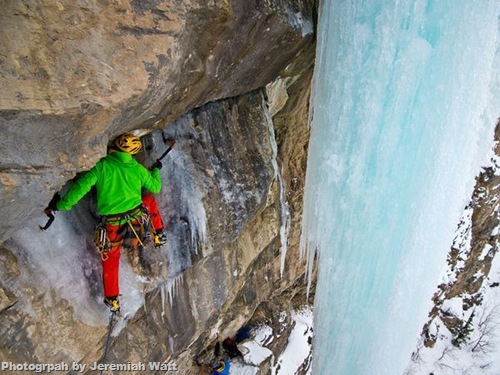
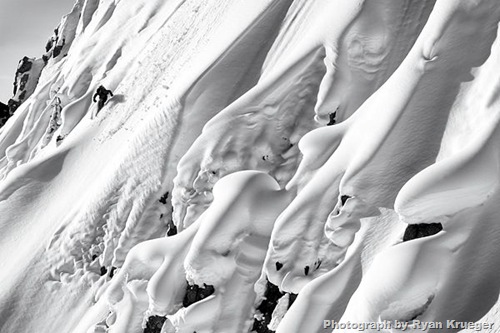
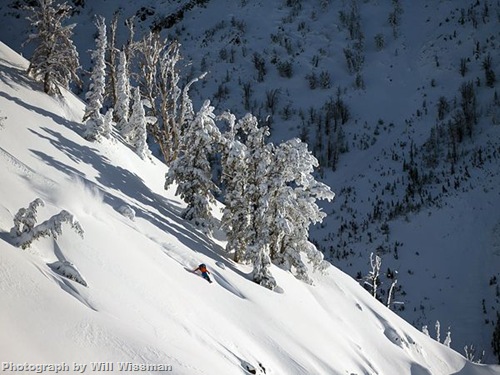

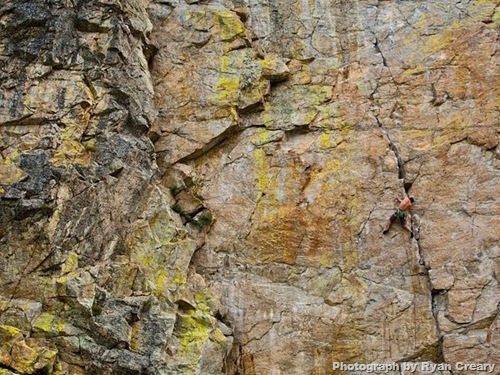
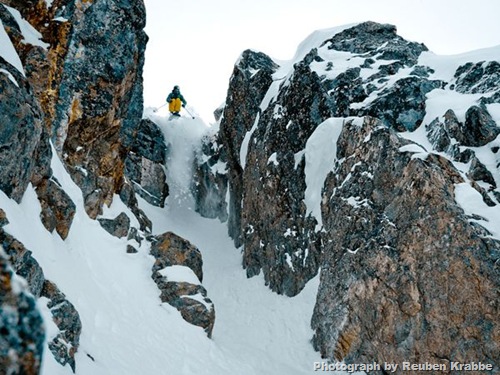
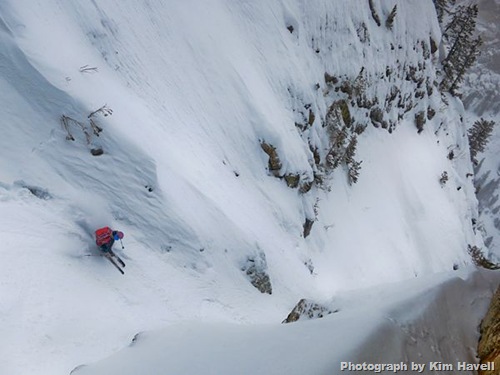

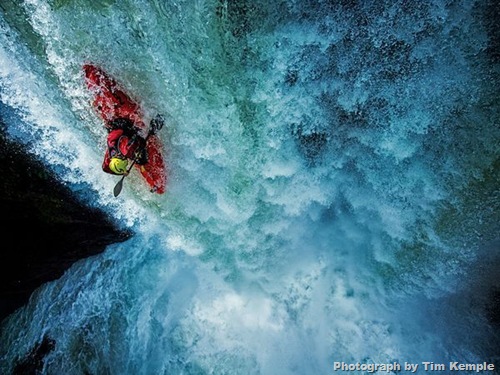
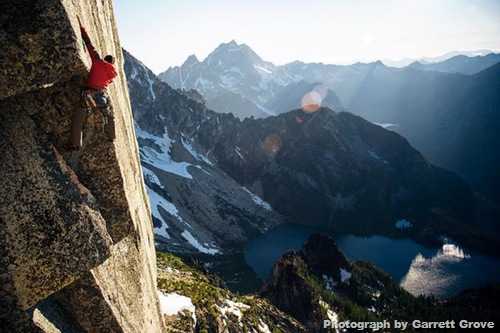
Awesome Post with some very nice pics shared in here. I enjoyed it reading Thanks for Posting
ReplyDelete